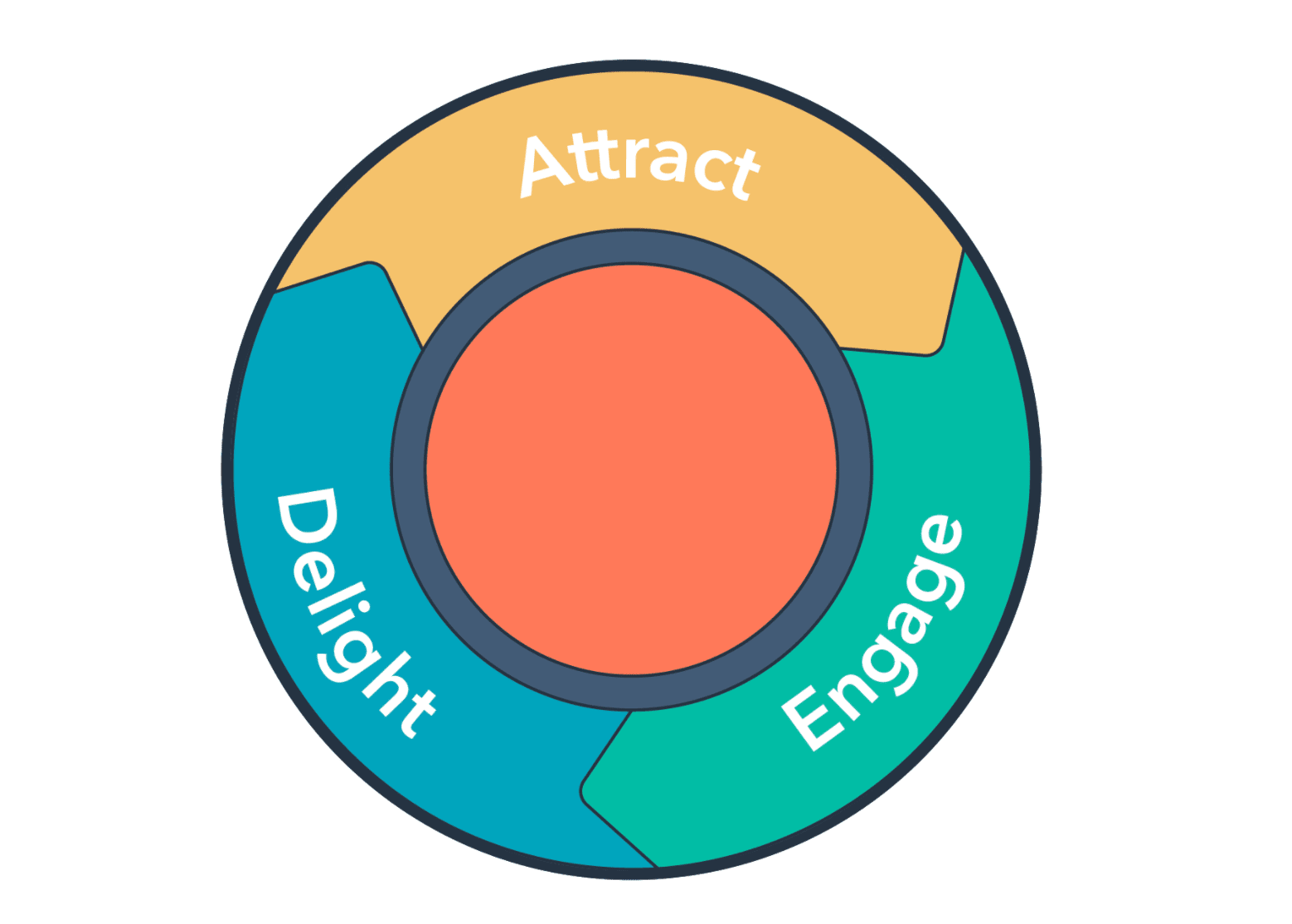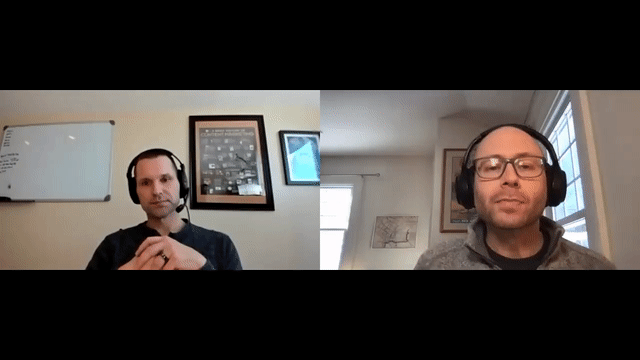Topics:
Inbound Marketing Marketing Strategy Content and Inbound Marketing 101 Getting Started with They Ask, You AnswerSubscribe now and get the latest podcast releases delivered straight to your inbox.
Who Should Use Inbound Marketing?

By John Becker
Mar 9, 2021

Tumultuous events make any business leader start asking tough questions.
In the wake of the COVID-19 pandemic and the economic volatility that’s followed, businesses around the world are scrutinizing their practices, positions, and values, making sure they’re doing what they say they do and are living their mission.
But it’s not just uncertainty that prompts such reflection. Day in, day out, business leaders are monitoring the numbers that indicate financial health, and marketing always presents a particular challenge in this regard.
The problem with traditional marketing methods
There’s an old saying in marketing: “I know I’m wasting half of my budget — I’m just not sure which half.”
That’s because traditional “outbound” marketing involves everything from mailings and radio spots to billboards and magazine ads. There’s a lot of uncertainty in such endeavors, and measuring success and ROI is notoriously problematic as they cast such a wide net.
Which campaign resonated? Which was overlooked?
Compounding this uncertainty is the fact that consumers everywhere are becoming ever more adept at blocking such marketing materials, with DVRs, satellite radio, and ad blockers pushing ads out of the line of vision. They know when they are being marketed to and are skilled at ignoring it.
For businesses frustrated by this challenge, inbound marketing offers a different approach. Rather than interrupting people, inbound marketing seeks to attract customers who are actively seeking your solutions.
🔎 Related: Outbound vs inbound marketing in 2021: What's the difference?
Imagine that: customers will come to you? Sounds like a dream.
So, what exactly is inbound marketing, and will it work for you? And if it will, how do you get started?
What is inbound marketing?
Inbound marketing started from a simple premise: The internet has fundamentally changed the way customers make purchases.
Think about it. Whatever you’re looking to buy — whether that’s a bicycle, a new stove, or a software service — you likely start with a Google search.
You might be looking for reviews, for comparisons, or just trying to find out how much something costs.
In the past, these questions would be handled by salespeople, who possessed a significant informational advantage over the customer. Consequently, they gained a reputation for being pushy, underhanded, and disingenuous.
Inbound marketing seeks to change all that. Here’s a fresh-faced Brian Halligan, CEO and co-founder of HubSpot, explaining how inbound is different.
Keep in mind, this was recorded in 2007 — it totally holds up today. Nice job, Brian.
In HubSpot language, inbound marketing seeks to attract, engage, and delight customers, building relationships and turning customers into fans and promoters along the way.
🔎 Related: What is the inbound marketing methodology? (updated for 2021)
(HubSpot uses what it calls a “flywheel” model in place of the traditional marketing and sales funnel. More information about the flywheel can be found here.)

Courtesy of HubSpot
So, how do you attract these customers? Inbound marketing involves a variety of tools including:
- social media
- search engine optimization
- email marketing
- blogging
- premium content creation
- video marketing
- paid aids
But at inbound's core is strategic content marketing.
At IMPACT, we focus on a particular style of inbound marketing and content strategy called They Ask, You Answer.
The idea is simple: If a customer asks a question, you should answer that question openly on your website. Even though it sounds so basic, few companies are willing to do it because the things customers really want to know are often the same things companies are hesitant to talk about.
- What are the potential drawbacks of your product?
- How does your service compare to the competition?
- Where can I find unbiased reviews of what you’re selling?
Even a question as simple as “What does it cost?” gets sidestepped on many websites. We all hate it when websites make us call for a quote, so why would we do the same thing to our customers?
If you provide customers with answers to the questions that they’re asking, they’ll come to your site. If they like what they read, they’ll begin to trust you. If they trust you, they’re more likely to buy from you.
As HubSpot puts it: you should focus on “drawing in the right people with valuable content and conversations that establish you as a trusted advisor with whom they want to engage.”
That’s the essence of inbound marketing.
Who should use inbound marketing?
A decade ago, inbound marketing was still seen as a fringe endeavor mostly confined to certain industries. Today, it’s table stakes for businesses of all sizes and industries.
HubSpot reported recently that 70% of marketers actively invest in inbound marketing, with roughly 60% saying inbound was "very important" or "extremely important" for their business. According to Responsify, businesses today are devoting about 2.5% of their annual revenue to inbound marketing, and with good reason.
Inbound marketing is effective and cost-effective, with inbound leads cost 62% less than outbound/traditional leads. Inbound leads convert more, too.
In a nutshell, inbound marketing has proven to be a low-cost approach to:
- Getting found in search engines
- Driving website traffic
- Generating leads through your website
- Nurturing leads to sales
- Delighting customers, which yields referrals and retention
But will inbound work for you?
Here at IMPACT, we’ve outlined successful inbound marketing strategies for numerous particular industries. You can check out some examples below:
- Commercial real estate inbound marketing strategy (with examples)
- Manufacturing inbound marketing strategy (with examples)
- Home services inbound marketing strategy (with examples)
- Health care inbound marketing strategy (with examples)
- Financial services inbound marketing strategy (with examples)
The industries listed here are just the tip of the iceberg when it comes to inbound. Even if your business does not fall under one of these headings, you should be inspired and intrigued to see how this methodology could be applied in your circumstances.
IMPACT co-owner Marcus Sheridan is an author and speaker — and the developer of They Ask, You Answer.
According to Marcus, you don’t have to wait to see an industry-specific case study to know if inbound marketing will work for your business. Instead, he says, you should apply the principles in a creative way to your needs and goals.
In this 11-minute interview, Marcus explains what you should learn from other industries as you plan your inbound marketing strategy.

Getting started with inbound marketing
How do you actually get started with inbound? Before you get going, you’ll need a plan. Then you’ll need the right employees. Then you need to ensure they have the right training.
Building a strategy
Your strategy is your blueprint. According to IMPACT content trainer Jen Barrell, “A content strategy is a full-company document that illustrates how the content the organization creates will impact every facet of the business.”
Jen says “Your strategy will provide a holistic view of where you as an organization want to go and how your content will help you get there.”
🔍 Related: 5 Key Elements of a Winning Inbound Marketing Strategy
To build your strategy, focus on developing answers to the six following questions:
- What is the goal and purpose of your organization?
- What do you hope to achieve with your content?
- Who is your audience?
- What are the ideal user paths through your website?
- How will you define inbound marketing success?
- Who owns the inbound strategy and who contributes to it on a regular basis?
With clarity around these points, you can start to move forward and assemble your team.
For more information about building a content strategy, check out Jen’s article on the subject: What is a content strategy? (definition and examples)
🔍 Related: Free Inbound Training and Marketing Courses
Building your team
While some companies hire an agency to enact their inbound efforts, we find this practice to be highly problematic. Limited publication, off-brand content, and high prices make this option less enticing than it first may seem.
Rather, we suggest hiring a content manager to oversee the whole initiative. They don’t need to be from within your industry; someone with a writing or journalism background is perfect.
This content manager can start producing content relatively quickly, and steady publication is a great way to be recognized by search engines.
We recommend publishing two or three articles per week, and a content manager is critical to ensuring steady production and publication.
Next, consider bringing on a videographer to produce the video content that complements what you write. Just as you want to be found in Google searches, you can also be found on YouTube, which some people consider to be the world’s second-most-popular search engine.
For more in-depth information about hiring and onboarding a content manager and videographer, check out these resources:
- Content manager job description for all industries (ready to use)
- How to evaluate the interviewing skills of a content manager candidate
- Is hiring a content manager really worth the cost?
- The value of hiring an industry outsider as a content manager
- How long does it take to hire and onboard a content manager?
- How to hire an in-house videographer: Selecting and interviewing the best candidate
Investing in training
Inbound marketing works best when it’s handled in-house. After all, no one knows your business, your industry, and your competition better than you do. Once you have the strategy and the team in place, you should start investing in training.
HubSpot Academy is an excellent place to start. They offer numerous courses, from basic to advanced, many with certifications.
IMPACT+, our online education platform and community, should be on your list as well. We offer dozens of courses as well as virtual peer groups, keynote recordings, and business tools to help you plan and chart your growth.
If you’re interested in accelerated growth, explore Digital Sales & Marketing Mastery — an intensive, individualized coaching and training program that takes you and your team to complete inbound marketing autonomy in 12, 18, or 24 months.
Off and running
When you’re staffed and trained, with a strategy in hand, your inbound efforts can move ahead at full steam.
Your sales team and marketing team can work together to brainstorm content that focuses on buyer questions. Your content manager can interview subject matter experts so they’re able to lend their authority to what’s being written. Your videographer can crank out important videos like The Selling 7 (i.e. employee bio videos, “claims we make” videos, and others.)
This content can get used in the sales process to better educate buyers — as well as draw traffic from search engines.
Customers will find your content and begin to trust your brand, making them more likely to buy from you in the future.
The more you publish, the more likely you are to get found.
Measuring your success
The beauty of inbound marketing is that it can be measured. With the right tools in place, you can see who visited your site, how they got there, how long they spent on each page, how they moved through, and whether or not they took a certain action.
You can measure open rates and click-through rates for emails, see how much of a video someone watched, and ultimately, see how each piece of content impacted a closed deal.
To do this, you’ll need a tool like HubSpot, which has a free version for small businesses and scales all the way up to enterprise-level. For an explanation, watch Liz Moorehead, IMPACT’s editor in chief, walk you through a reporting strategy:
All-too-common inbound pitfalls to avoid
Inbound marketing can bring amazing success to your business, but not without a lot of hard work. Like anything else, you get out what you put in. Many companies get started and peter out, falling into one of several pitfalls you should be sure to avoid.
Not publishing regularly: Publishing content seems so easy at first. You might be fast out of the gate but then struggle to maintain a regular publication schedule of two to three new pieces of content per week.
Inbound marketing is a marathon, not a sprint. Make sure you're ready (and staffed) for the long haul. Build the strategies that guarantee steady content production.
Publishing fluffy, “me-focused” content: Yale Appliances in Boston (an IMPACT client) thought they were doing everything right — but they weren’t seeing the numbers they wanted. The CEO was writing regularly, but the content was not what the customers needed. Remember, in order for customers to find value in your content, it needs to address their fears, concerns, and apprehensions.
Here, CEO Steve Scheinkopf explains what they were doing wrong.

If content is too self-promotional or fluffy, it won’t resonate with site visitors.
Being too salesy: Along with fluffy content, avoid content that is too salesy. Remember, inbound is supposed to be an antidote to the hard sell mentality of outbound marketing. Focus on educating your customer. Be honest about your products and services and who they’re a good fit for.
Although this might diminish your leads in the short term, you will ultimately benefit by avoiding bad-fit prospects.
Failing to create a culture of content: In order for inbound to work well, it needs to involve more than just your marketing team. Your sales team should be sharing content ideas with the marketing team (and then offering feedback on final work).
Your subject matter experts must make themselves available for interviews and, at times, create content of their own. Your senior leadership should share content wins and show support for the initiative. Without this team-wide buy-in, inbound could become just another marketing initiative that fizzles.
Forgetting about video: According to Cisco, by next year 82% of global internet traffic will come from video streaming and downloads. Your prospects expect to see video content from your brand, whether that’s on your site, on YouTube or social media, or in the sales process.
A robust inbound marketing strategy must include video. To produce a steady cadence of video content, you’ll need an in-house videographer.
Inbound marketing success at your business
Inbound marketing keeps the customer at the center of your marketing efforts. When customers are in the consideration stage of a purchase, they want to feel informed and they want to build relationships with trusted vendors. If your website has content that is easily found, helpful, and honest, customers will begin to feel like they know and trust you.
This methodology has been used around the world by businesses of all kinds. Can it work in your industry? In your sector? In your vertical? In other words, can it work for you?
If you value informed, educated consumers, if you value trust, if you value building relationships — then yes. Inbound can help you attract better-fit prospects and shorten your sales cycle.
But inbound is not a magic wand. If you want to see success, you need to invest in your team, their training, and their tools.
In the long run, inbound will save you money, and you will spend less per lead. But you will need to take a hard look in the marketing mirror, first. Investing in inbound likely means reallocating budget. What marketing initiatives are you currently pursuing that are not yielding results? Maybe it’s time to cut back on paid media spending, for example, or outbound marketing if it's not resulting in leads.
Inbound marketing can work for you. Learn all you can, partner with the right teachers and trainers, bring on the right team members, and trust the process.


Order Your Copy of Marcus Sheridan's New Book — Endless Customers!